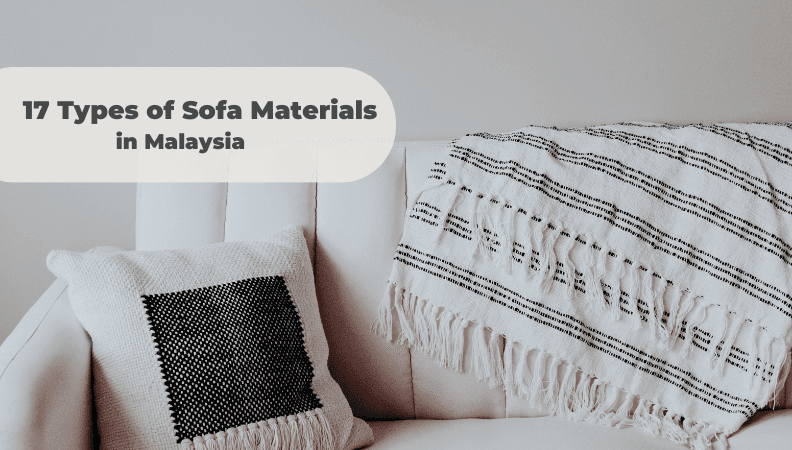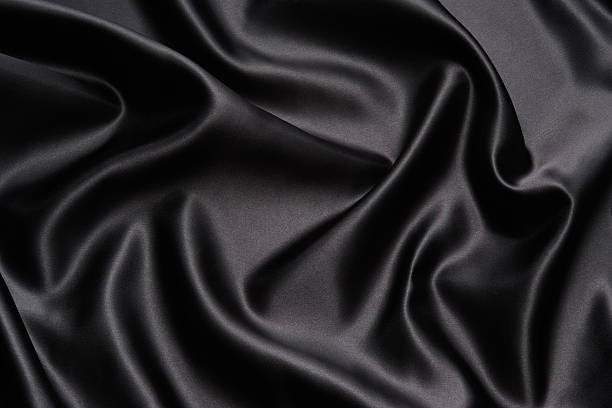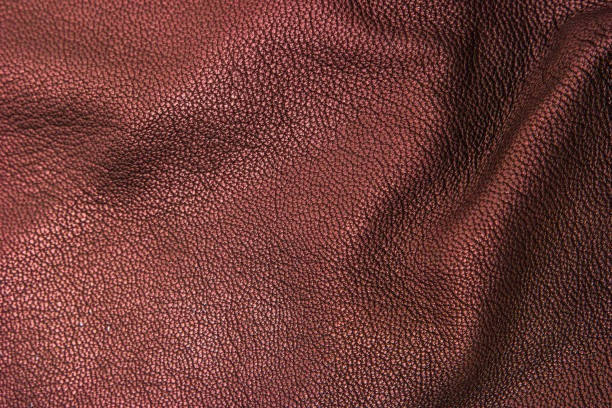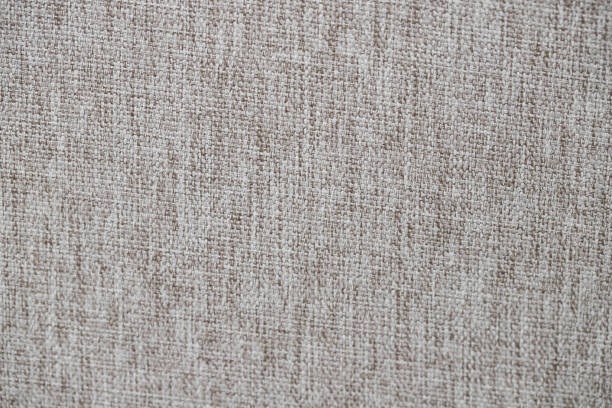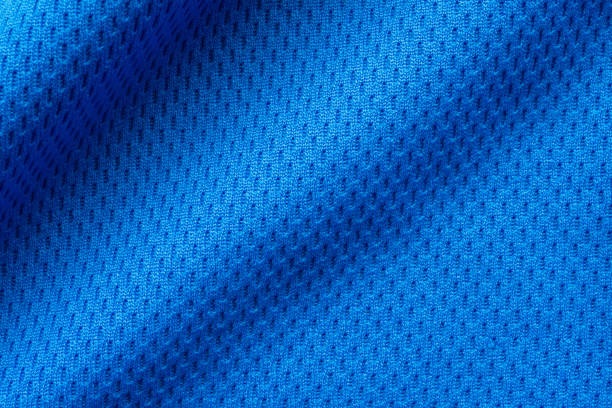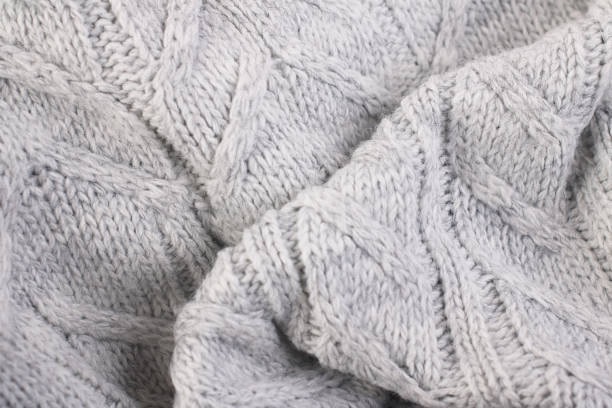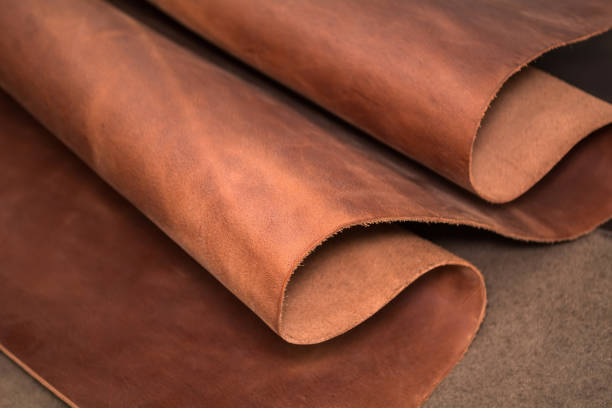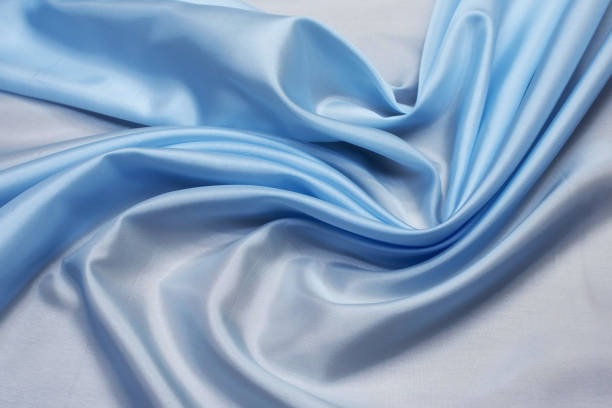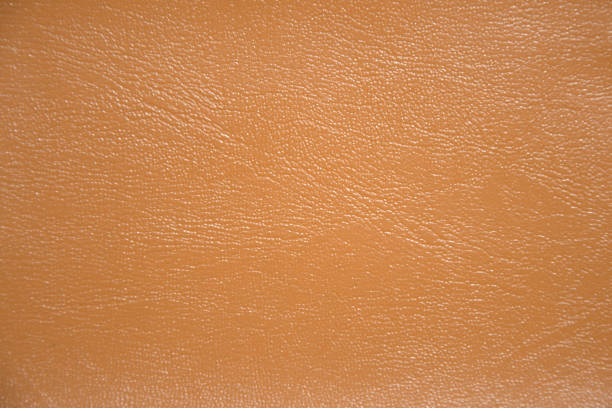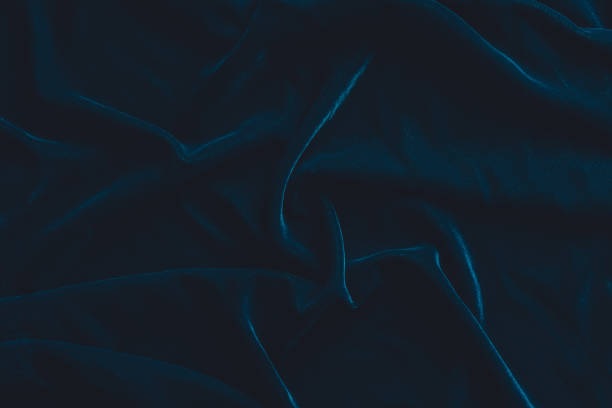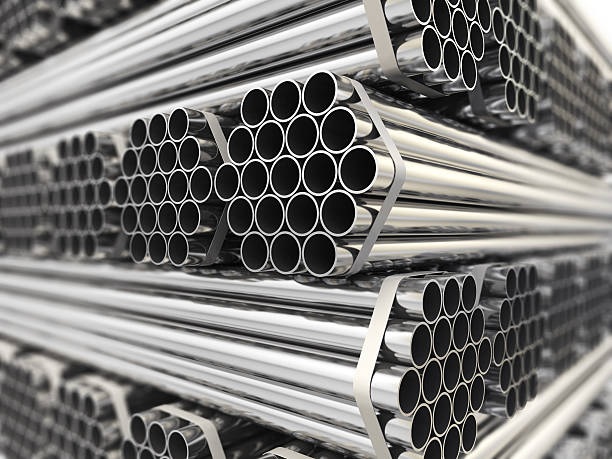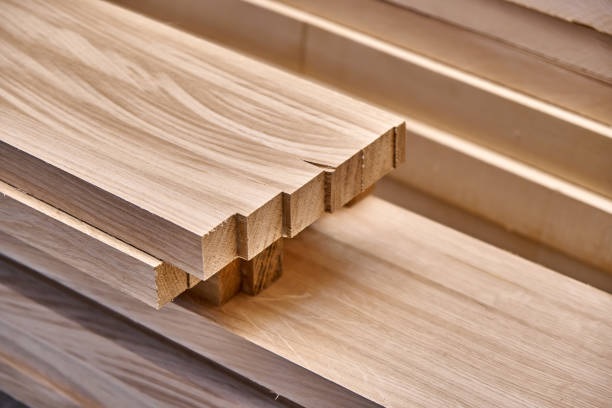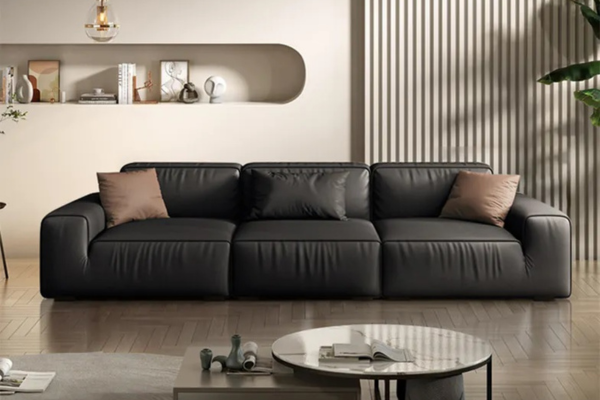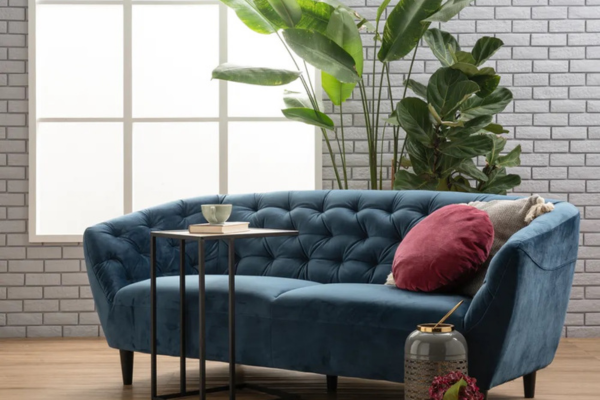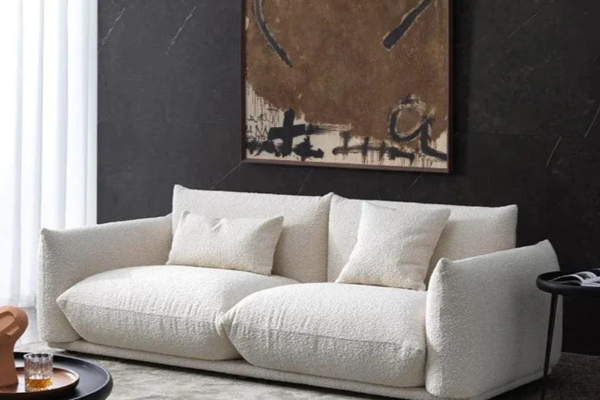Common Types of Sofa Materials in Malaysia
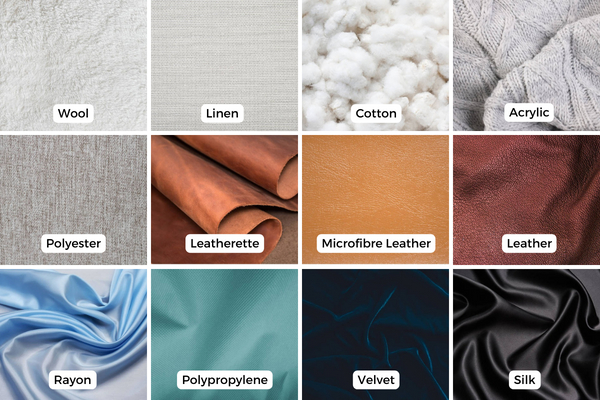
Sofas play a vital role in creating a cosy and stylish living space, especially here in Malaysia. When it comes to choosing the perfect sofa, one of the most important things to consider is the material it's made of. The choice of sofa material can greatly affect how it looks, feels, and how long it lasts.
In Malaysia, you'll find several commonly used sofa materials that are loved by homeowners. In this article, we'll provide you an overview of these materials, highlighting their unique characteristics and advantages. By the end, you'll be well-equipped to make an informed decision when selecting a sofa for your home in Malaysia. So, let's get started!
Sofa Fabric Materials Made From Natural Fibres
Natural fibres are just what they sound like: materials that come straight from nature, specifically from plants and animals. Some examples of these commonly used natural fibre materials are:
1. Linen:
Linen is a natural fibre derived from the flax plant. It is known for its durability, breathability, and natural cooling properties. It has a crisp texture and a luxurious appearance, making it a popular choice for sofas.
Pros:
-
Breathability: Linen allows air to circulate, keeping the sofa cool and comfortable.
-
Durability: Linen is a strong and long-lasting fabric, making it suitable for heavy-use sofas.
-
Natural aesthetic: It adds a sophisticated and elegant touch to the sofa's overall look.
Cons:
-
Wrinkles easily: Linen tends to wrinkle and crease easily, requiring regular ironing or steaming to maintain a smooth appearance.
-
Prone to stains: It can be more susceptible to stains compared to other fabrics, requiring prompt cleaning and care.
2. Wool:
Wool is a natural fibre derived from the fleece of sheep or other animals like goats and alpacas. It is known for its warmth, softness, and natural insulating properties. It is often used in sofas for its comfort and luxurious feel.
Pros:
-
Insulation: Wool provides natural insulation, making it suitable for colder climates or winter seasons.
-
Softness: It has a soft and cosy texture, adding comfort to the sofa.
-
Fire resistance: Wool is inherently flame-resistant, offering added safety.
Cons:
-
Susceptible to shedding: Wool can shed or pill over time, requiring occasional maintenance to keep the sofa looking its best.
-
Allergenic potential: Some individuals may be sensitive or allergic to wool, requiring consideration for those with allergies.
3. Silk:
Silk is a natural fibre produced by silkworms to create their cocoons. It is known for its lustrous appearance, softness, and smooth texture. They are considered luxurious and are often used in high-end furniture, including sofas.
Pros:
-
Luxurious feel: Silk has a rich and elegant texture, adding a touch of opulence to the sofa.
-
Breathability: It offers excellent breathability, ensuring comfort during warm weather.
-
Hypoallergenic: Silk is resistant to common allergens, making it suitable for individuals with allergies.
Cons:
-
Delicate: Silk is a delicate fabric that requires gentle care and maintenance to avoid damage.
-
Susceptible to stains: It can be easily stained, and certain substances may leave permanent marks, necessitating careful handling and cleaning.
4. Cotton:
Cotton is a natural fibre derived from the cotton plant. It is a widely used fabric due to its versatility and comfort. Cotton fabrics for sofas can vary in texture, ranging from soft and smooth to more durable and textured weaves.
Pros:
-
Softness and comfort: Cotton offers a soft and comfortable feel, making it pleasant to sit on.
-
Breathability: It is highly breathable, allowing air to circulate and keeping the sofa cool.
-
Easy maintenance: Cotton is generally easy to clean and maintain, as it is machine washable in most cases.
Cons:
-
Prone to wrinkling: Cotton fabrics tend to wrinkle easily, requiring regular ironing or steaming to maintain a neat appearance.
-
Potential for fading: Certain dyes used in cotton fabrics may fade over time, especially with prolonged exposure to sunlight.
5. Leather:
Leather is a natural material made from animal hides, usually obtained from cattle. It's known for being durable, having a timeless look, and a unique texture. To create leather, the raw hides go through a series of treatments using different chemicals to get rid of the hair and prevent decay. Then, through a tanning process, the hides are transformed into a strong and flexible material.
Pros:
-
Durability: Leather is highly durable and can withstand regular use, making it a long-lasting choice for sofas.
-
Timeless aesthetic: It offers a classic and sophisticated look that can complement various interior styles.
-
Natural patina: Over time, leather develops a unique patina, adding character and charm to the sofa.
Cons:
-
Cost: Leather sofas can be more expensive compared to other fabric options.
-
Maintenance: Leather requires specific care and maintenance to prevent drying, cracking, or staining. Regular conditioning is recommended.
-
Temperature sensitivity: Leather can feel cold in cooler climates and may become sticky in hot and humid environments.
Sofa Fabric Materials Made From Synthetic Fibres
Synthetic fibre is a cleverly made material that mimics the qualities of natural fibres while having the added bonus of being highly resistant to stains. Some examples of synthetic fibres are:
1. Polyester:
Polyester is a synthetic fibre commonly used in sofa fabrics due to its durability and resistance to wrinkles, fading, and shrinking. It is made from a combination of petroleum-based chemicals and synthetic polymers.
Pros:
-
Durable: Polyester is a strong and resilient material, making it suitable for high-traffic areas.
-
Stain-resistant: It has good resistance to stains, spills, and fading, making it easier to clean and maintain.
Affordability: Polyester fabrics are often more budget-friendly compared to other options.
Cons:
-
Heat sensitivity: Polyester can be sensitive to heat, and prolonged exposure to high temperatures can cause it to melt or deform.
-
Less breathable: It is not as breathable as natural fibres, which can lead to discomfort in hot and humid climates.
2. Nylon:
Nylon is another popular synthetic fibre used in sofa fabric manufacturing. It is known for its strength, abrasion resistance, and ability to retain its shape. Nylon is made through a process called polymerization, where the chemical reaction of combining specific compounds forms long chains of molecules.
Pros:
-
Strength and durability: Nylon is known for its exceptional strength, making it resistant to wear and tear.
-
Easy to clean: It is stain-resistant and can be cleaned with ease.
-
Quick drying: Nylon dries relatively quickly, which can be advantageous in humid environments or in case of spills.
Cons:
-
Prone to static build-up: Nylon fabrics can generate static electricity, leading to static shocks.
-
Fading: Over time, nylon may be prone to fading when exposed to sunlight.
3. Acrylic:
Acrylic fibres are made by polymerizing acrylonitrile, a petroleum-based compound. The resulting fibre is lightweight, soft, and has excellent resistance to sunlight, mildew, and chemicals. Acrylic fabrics are known for their vibrant colours and ability to mimic natural fibres like wool.
Pros:
-
Softness: Acrylic fabrics have a soft and plush feel, providing comfort.
-
Resistance to sunlight: Acrylic fibres are more resistant to UV rays, reducing the likelihood of colour fading.
-
Mildew-resistant: Acrylic is resistant to mildew, making it suitable for humid environments.
Cons:
-
Less durable: Compared to other synthetic fibres, acrylic is generally less durable and more prone to pilling.
-
Heat sensitivity: Acrylic fibres can be sensitive to heat and may melt or deform when exposed to high temperatures.
4. Leatherette
Leatherette is a type of synthetic material designed to imitate the appearance and texture of genuine leather. Also known as faux leather or vegan leather, leatherette is made from a variety of materials such as vinyl or polyurethane, which are then treated and embossed to resemble the grain and feel of real leather.
Pros:
-
Cost-effective: Leatherette is generally more affordable than genuine leather, making it a budget-friendly option for those who desire the look of leather without the higher price tag.
-
Animal-friendly: As a synthetic material, leatherette does not require the use of animal hides, making it a popular choice for individuals who prefer cruelty-free and vegan products.
-
Durability: Leatherette is known for its durability and resistance to wear and tear. It is less prone to cracking, peeling, or fading.
-
Easy maintenance: Unlike genuine leather, leatherette is relatively low maintenance. It can be easily cleaned with a damp cloth and mild soap, and it is less susceptible to stains and spills.
Cons:
-
Less breathable: One of the drawbacks of leatherette is that it is less breathable than genuine leather. It does not allow air to circulate as freely, which can lead to a less comfortable experience, particularly in warm or humid environments.
-
Less natural appearance: The texture and sheen of leatherette can sometimes appear artificial, which may be a downside for those seeking an authentic leather appearance.
-
Environmental impact: While leatherette is an animal-friendly alternative, its production involves the use of synthetic materials, such as petroleum-based products, which can have a negative impact on the environment.
-
Potential durability issues: Although leatherette is generally durable, it may not withstand heavy usage or extreme conditions as well as genuine leather.
5. Rayon:
Although rayon is derived from plant materials, it is classified as a synthetic fibre due to the extensive processing it undergoes. It is made from chemically treated cellulose fibres extracted from wood pulp or bamboo. They can imitate the look and feel of silk, cotton, or linen, depending on the processing method used.
Pros:
-
Soft and comfortable: Rayon has a silky and smooth texture, providing a luxurious feel.
-
Versatility: It can mimic the appearance of natural fibres like silk or cotton, making it a versatile option.
-
Breathability: Rayon is more breathable than some other synthetic fibres, allowing air circulation.
Cons:
-
Susceptible to wrinkling: Rayon fabrics are prone to wrinkling, and they may require ironing or steaming.
-
Absorbency: Rayon has high absorbency, making it more susceptible to moisture and stains.
6. Polypropylene:
Polypropylene, also known as polypropene, is a thermoplastic polymer used to create synthetic fibres. It is commonly used in furniture fabrics due to its high tensile strength, resistance to moisture, and excellent colorfastness.
Pros:
-
Stain-resistant: Polypropylene has excellent stain resistance, making it easy to clean and maintain.
-
Moisture resistance: It repels moisture, making it suitable for areas prone to spills or high humidity.
-
Lightweight: Polypropylene fabrics are lightweight, which can be advantageous for portability and easy handling.
Cons:
-
Prone to melting: Polypropylene has a low melting point and can be damaged by heat sources.
-
Not as soft: It may not provide the same level of softness and comfort as other materials.
7. Microfibre Leather:
Microfibre leather is a synthetic material that replicates the look and feel of genuine leather. It is made from a combination of polyester and polyurethane. It is highly durable, stain-resistant, and easy to maintain.
Pros:
-
Leather-like appearance: Microfibre leather is designed to imitate the look and feel of genuine leather.
-
Animal-friendly: It is a cruelty-free alternative to real leather, making it a preferred choice for those who are conscious of animal welfare.
-
Easy maintenance: Microfibre leather is generally easy to clean and maintain, requiring minimal effort.
Cons:
-
Durability concerns: While microfibre leather is generally durable, it may not possess the same level of longevity and resilience as genuine leather.
-
Breathability: It is not as breathable as real leather, which can result in discomfort in hot weather.
8. Vinyl:
Vinyl, also known as PVC (polyvinyl chloride), is a synthetic material used to create sofa fabrics. It is made by polymerizing vinyl chloride monomers. Vinyl fabrics are durable, water-resistant, and easy to clean. They come in a variety of colours, patterns, and textures, making them a versatile choice for upholstery.
Pros:
-
Affordability: Vinyl is often a more cost-effective alternative to genuine leather.
-
Easy to clean: It is resistant to stains and can be easily wiped clean with a damp cloth.
-
Water resistance: Vinyl is highly resistant to water, making it suitable for areas prone to spills.
Cons:
-
Lack of breathability: Vinyl does not allow for air circulation, which can cause sweating and discomfort, especially in warm environments.
-
Durability concerns: Over time, vinyl can be prone to cracking or peeling, particularly in high-wear areas.
9. Velvet:
Velvet can be made from both natural and synthetic fibres. Synthetic velvet is typically made from polyester or nylon fibres. The fibres are woven tightly to create a dense pile that gives velvet its luxurious and soft texture.
Pros:
-
Luxurious appearance: Velvet fabrics have a rich and elegant aesthetic, adding a touch of sophistication to furniture.
-
Softness and comfort: Velvet is known for its plush texture, providing a comfortable seating experience.
-
Insulation: It offers good insulation, making it suitable for colder climates.
Cons:
-
Prone to crushing: Velvet can be susceptible to crushing or flattening, requiring regular maintenance to restore its appearance.
-
Difficult to clean: Velvet fabrics can be more challenging to clean, as they may require specialised care and attention.
10. Bouclé:
Bouclé fabric is a unique textile known for its distinctive looped or curled appearance. It is made from a variety of natural and synthetic fibres, including wool, cotton, and acrylic. The loops and curls are created during the weaving process, giving Bouclé its characteristic texture and visual appeal.
Pros:
-
Textural interest: Bouclé fabric offers a visually interesting and tactile surface, making it a captivating choice for upholstery and home decor.
-
Warmth and cosiness: Due to its often woollen composition, Bouclé provides warmth and comfort, making it suitable for furniture and clothing in colder climates.
-
Durable: Bouclé's tightly woven loops contribute to its durability, ensuring it can withstand regular use and maintain its unique appearance.
Cons:
-
Susceptible to snagging: The looped nature of Bouclé can make it prone to snagging, so it should be used with care to avoid damage.
-
Not suitable for pet owners: The loops in Bouclé can catch pet claws, potentially causing damage over time.
-
Maintenance: Regular maintenance may be required to prevent excessive wear and tear and maintain the fabric's appearance.
Non-Fabric Sofa Materials
1. Metal:
Metal, including steel, iron, and aluminium, is durable and used for making sofas. They often have modern designs, fitting contemporary or industrial homes.
The metal frame offers strong support, ensuring longevity, and can be moulded into intricate designs.
2. Wood
Wood is timeless for sofas with varieties like oak, pine, mahogany, and ash each offering unique qualities. Light woods convey a rustic feel, while darker ones radiate elegance.
Wood ensures sturdiness, allows intricate carvings, and its texture and grain enhance visual appeal, making it popular for diverse interiors.
Sofa Material Selection: Factors to Consider
When choosing the perfect sofa material, there are a few factors you should keep in mind:
-
Durability: The durability of the sofa material is crucial, especially if you expect heavy usage or have pets or children. Look for materials that can withstand wear and tear, such as leather, microfibre leather, or tightly woven fabrics.
-
Comfort: Comfort is key when it comes to a sofa. Consider the softness, texture, and breathability of the material. Fabrics like linen and cotton can offer a cosy and breathable feel, while leather provides a smooth and luxurious touch.
-
Maintenance: Different materials require different levels of maintenance. Some fabrics may be stain-resistant or easy to clean, while others may require professional cleaning or extra care. Consider your lifestyle and willingness to maintain the material accordingly.
-
Style and aesthetics: The material you choose should complement the overall style and aesthetics of your living space. Consider the colour, pattern, and texture of the material to ensure it fits well with your existing furniture and décor.
-
Allergies: If you or your family members have allergies or sensitivities, it's essential to choose a hypoallergenic material. Avoid materials that attract dust mites or are known to cause allergies, such as certain types of synthetic fabrics.
-
Budget: Your budget plays a significant role in selecting a sofa material. Different materials come at varying price points, so it's crucial to determine how much you're willing to spend. Remember to balance cost with quality and long-term durability.
By considering these factors, you can make an informed decision and choose a sofa material that meets your needs and preferences.
Best Sofa Fabric for Heavy Use: Microfibre Leather, Leather, Cotton
When it comes to choosing the best sofa fabric for heavy use, durability and resilience are key factors to consider. One of the top choices is microfibre leather, a synthetic fabric known for its strength and resistance to stains and wear.
Another excellent option is leather, which not only adds a touch of elegance but also withstands heavy use due to its natural toughness.
Additionally, heavy-duty cotton can be a suitable choice, particularly when treated with stain-resistant finishes. Ultimately, The best fabric for heavy use depends on your needs, style, and budget.
Easy-to-clean Sofa Materials: Leather, Microfibre Leather, Polyester, Nylon, Acrylic
For an easy-to-clean sofa material, consider leather, especially genuine leather. Its smooth surface makes wiping simple, and its durability ensures it remains lustrous even with frequent cleaning.
Another material worth mentioning is microfibre leather,, a stain-resistant synthetic material with a tight weave that simplifies cleanup through easy wiping with a damp cloth.
Synthetic fabrics like polyester and nylon are also popular options for easy-to-clean sofas. These fabrics resist stains and are easily spot-cleaned. Polyester and nylon are durable, ensuring a long-lasting sofa.
For outdoor sofas or those facing wear and tear, acrylic is a good choice. It's water, stain, and fade-resistant, making maintenance easier and suitable for varying conditions and spills.
You can also refer to this blog for a step-by-step guide on how to clean your sofa at home.
Best Sofa Material for Durability for Cat & Dog Owners: Leather, Velvet, Cotton, Linen, Microfibre Leather
Selecting the ideal sofa material for cat and dog owners demands careful consideration. Fortunately, there are pet-friendly options that combine durability with style.
Leather sofas are favoured by pet owners for their resilience, easy cleaning, and resistance to scratches and spills, although they might not suit excessive scratchers. Velvet sofas are another choice that offers both durability and a luxurious feel.
Proper care, such as regular brushing and vacuuming, can maintain its resilience, while prompt cleanup of accidents prevents stubborn stains.
For those seeking pet-friendly sofa options, consider cotton or linen for comfort and durability, provided you choose high-quality, tightly woven variants to minimise the risk of snags and tears.
Alternatively, microfibre leather combines the strength of leather with the plush comfort of microfibre, making it an excellent choice for pet owners due to its scratch and stain resistance.
Regardless of your choice, remember to maintain your sofa by regular vacuuming, using protective covers, and promptly addressing spills to ensure its longevity and style.
Best Sofa Material for Comfort: Velvet, Leather, Cotton, Linen
When it comes to finding the comfiest sofa material, there are a few top contenders that will make you feel like you're sitting on a cloud. One fantastic option is velvet, which has a luxurious and super soft feel that you won't be able to resist snuggling into. These sofas offer plush comfort with a smooth texture for enhanced seating.
Leather sofas are also a popular choice, blending durability with comfort, becoming cosier over time as they mould to your body's shape, offering excellent support and long-lasting quality for a luxurious and inviting seating experience.
For a versatile and breathable option, you can't go wrong with cotton sofas. Great for warm seasons, cotton's natural fibres keep you cool, provide comfort, and prevent sweat buildup during long sits.
Lastly, there's linen, a natural material that feels incredibly soft and light. Linen sofas provide a relaxed and casual vibe, perfect for creating a cosy atmosphere in your living space. Linen's breathability and moisture-wicking make it perfect for year-round comfort and its texture adds elegance to your seating.
Best Fabric for Sofa Covers: Cotton, Polyester, Velvet
When it comes to choosing the best fabric for sofa covers, there are a few options worth considering. Firstly, cotton is a popular choice due to its durability and versatility. It is soft, breathable, and easy to clean, making it ideal for everyday use.
Secondly, linen is another excellent option, known for its natural and elegant look. Linen fabric is durable, resistant to fading, and offers a cool and comfortable feel.
Additionally, polyester blends are a practical choice as they are resistant to stains and wrinkles, making them suitable for households with pets or children.
Finally, velvet is a luxurious choice that adds a touch of elegance to any living space. It is soft, plush, and durable, perfect for creating a sophisticated look.
Best Sofa Material for the Hot Weather in Malaysia: Linen, Cotton, Polyester, Microfibre Leather,
When it comes to choosing the best sofa material for hot weather in Malaysia, one of the top options is linen. Linen is a breathable fabric that allows air circulation, keeping you cool and comfortable even in high temperatures.
Another suitable choice is cotton, which is lightweight and absorbs moisture, helping to prevent sweat buildup. Synthetic materials like polyester or microfibre can also be good options as they are resistant to heat and do not retain moisture.
Additionally, considering light colours for the sofa fabric can help reflect sunlight and reduce heat absorption. Lastly, opting for removable and washable covers allows for easy maintenance and freshness during the hot and humid weather in Malaysia.
So, What Is the Best Sofa Material: Leather, Fabric, or Else?
When choosing a sofa material, options like leather and fabric come to mind. Leather sofas offer a touch of luxury and elegance, boasting durability and the ability to withstand wear and tear. Over time, leather develops a unique patina and can be easily cleaned.
On the other hand, fabric sofas provide a wide range of colours, patterns, and textures. They offer comfort and a cosy atmosphere, are more affordable than leather, and can be customised. However, fabric sofas require more frequent cleaning and are susceptible to staining.
Apart from leather and fabric, other materials like microfibre, velvet, and synthetic blends are also used in sofa construction. Microfibre sofas are soft, resistant to stains, and low-maintenance. Velvet sofas exude a luxurious and glamorous feel, although they require more care to maintain their appearance.
Ultimately, the choice of the best sofa material depends on personal preferences, lifestyle, and budget. For more detailed information, refer to the article "Fabric vs Leather Sofas: Which Is Better?" to make an informed decision.
Conclusion: Choosing Your Perfect Sofa Material
In conclusion, selecting the ideal sofa material is crucial in finding your perfect piece of furniture. By understanding the various materials available, you can make an informed decision that aligns with your style, comfort preferences, and lifestyle needs. Whether you opt for leather, fabric, microfibre, or synthetic blends, each material possesses unique qualities that contribute to the overall look, feel, and durability of your sofa.
With this knowledge, you will be equipped to choose a sofa that not only complements your living space but also provides the desired level of comfort and longevity.
